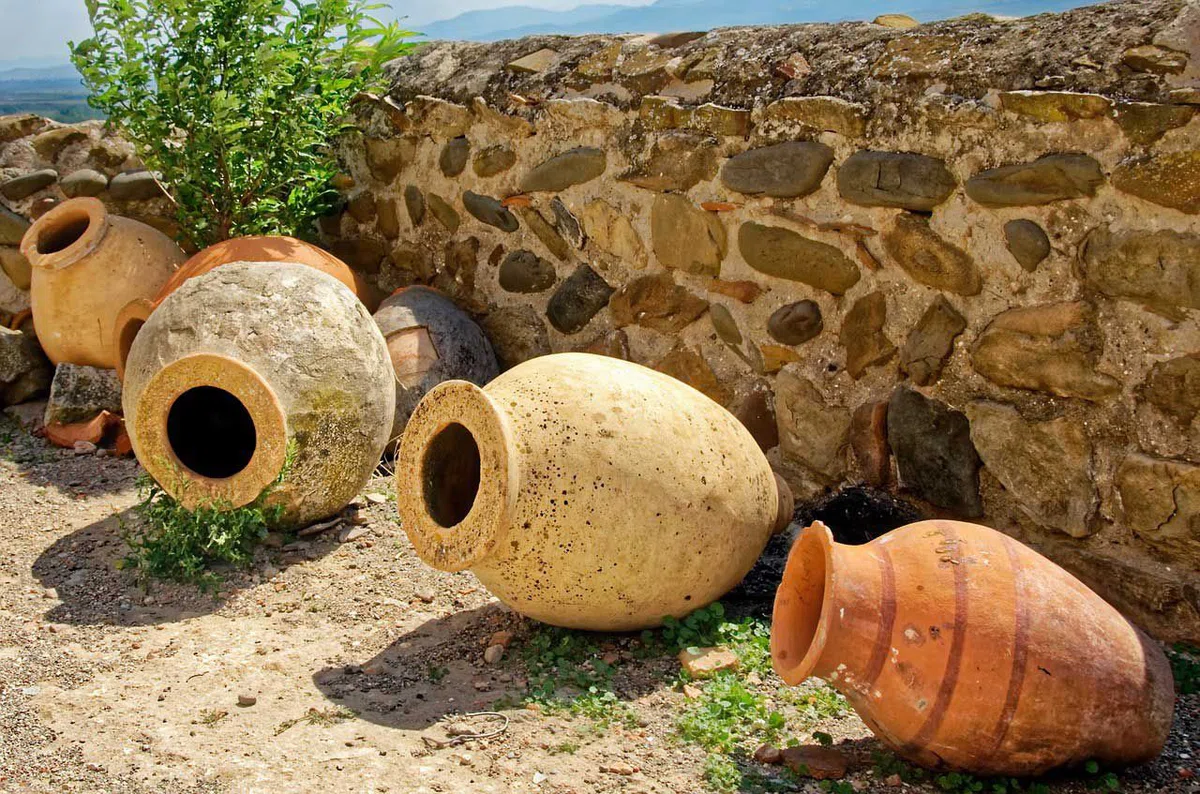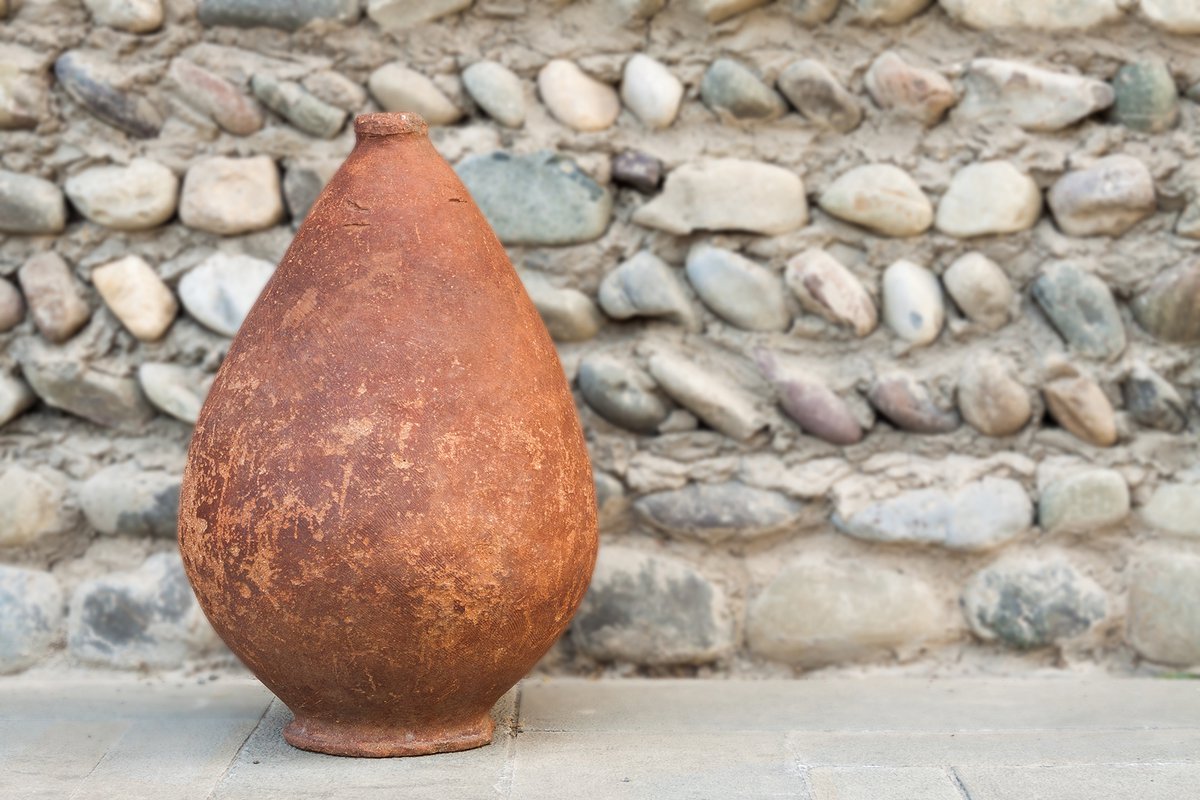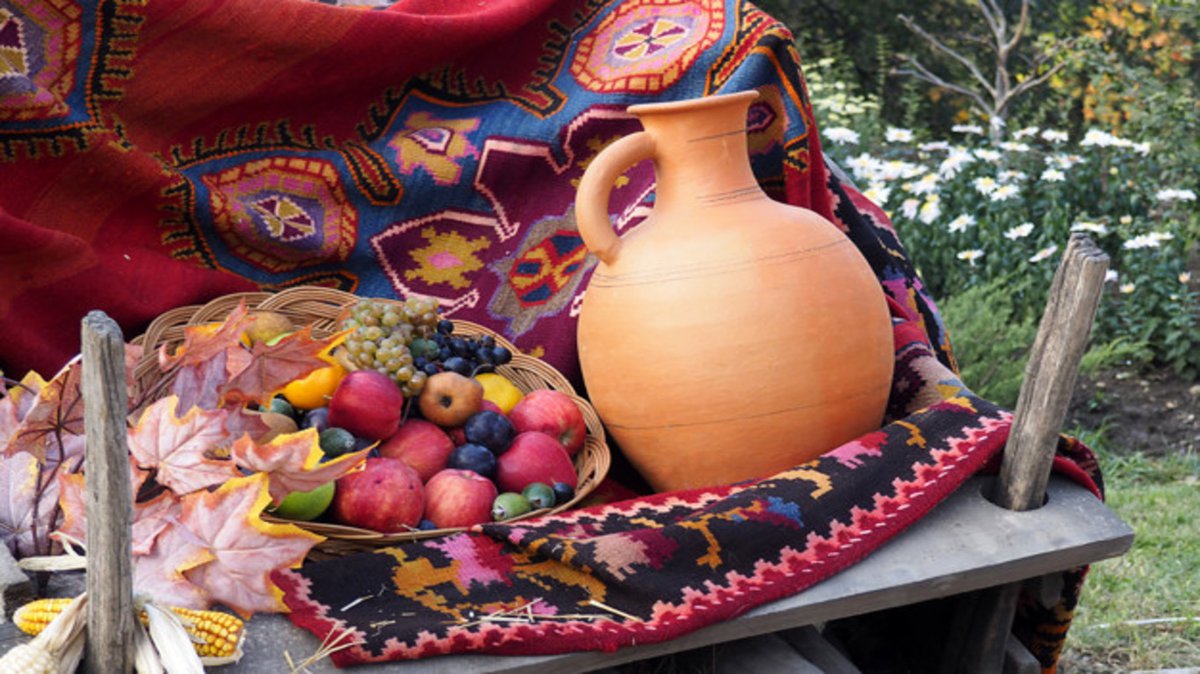
What are qvevris, how wine is prepared in them and what value does it carry?
Georgia is a country with a rich history and culture: traditions, legends, mountain landscapes, literature, food - all this helps tourists to fall in love with this corner of Transcaucasia. But how much do you know about Georgian wine? What is its great importance for the state? How is the grape drink prepared? In this article, we will figure out: what is a qvevri, how wine is prepared in them and what value it carries.
Georgia is a country with a rich history and culture: traditions, legends, mountain landscapes, literature, food - all this helps tourists to fall in love with this corner of Transcaucasia. But how much do you know about Georgian wine? What is its great importance for the state? How is the grape drink prepared? In this article, we will figure out: what is a qvevri, how wine is prepared in it and what value it carries.
History and importance of qvevri in Georgia

Georgia is the oldest wine-making country in the world. The history of wine production here goes back more than 8,000 years. One of the features of winemaking is qvevri - traditional clay amphorae in which the fermentation and storage of grape alcoholic beverage takes place. Qvevri, also known as kampki or kvampki. They have a long and rich history, giving deep significance to winemaking in Georgia.
Excavations were carried out on the territory of Georgia, where archaeologists found amphorae that date back to the 6-5 millennium BC, which means that Georgian winemakers used jugs for many centuries. They served not only for the preparation and storage of wine, but also for transporting alcohol to other countries, selling it in markets or shops.
The vessels are made of various types of clay, such as "tovli", translated as "snow" due to its white color, and "isin" - an orange type of clay, when fired, it acquires a greasy shine. Different rocks give wine its own characteristics. Minerals are to blame for everything: they affect the taste and aroma of the drink.
The process of making wine in qvevri
The process of producing wine in a bizarrely shaped container differs from traditional production methods used in other regions of the world: thanks to clay amphorae, the wine is saturated with a special aroma and taste.
First, the vessel is filled with crushed grapes. Then the mass is closed with a lid to retain heat and prevent oxygen from spoiling the future drink. Next, the fermentation process occurs - natural fermentation, during which the grapes begin to produce natural yeast. Due to the lack of oxygen, the yeast begins to eat organic compounds. The future wine, in contact with the walls of the clay kvampka, gives a delicious taste, aroma and quality.
One of the tasks of the Georgian amphora is to create minimal contact between the wine and air and. reduce the effects of oxidation, which allows preserving its natural properties.
You can still try wine made using ancient technologies. We share with you a list of cities and villages where the grape drink is prepared using ancient recipes:

Not far from Kutaisi:
- village Shua-Kvaliti
- Village Zeda Kvaliti
- Village Kveda-Kvaliti
- settlement Obcha
- village Khvanchkara
- Sighnaghi
- Mukhuri village
- Samegrelo

Not far from Tbilisi:

The influence of qvevri on the characteristics of wine
The use of a Georgian jug in the production of alcohol has a significant impact on its characteristics. First of all, due to the lack of contact with wood, clay amphorae do not interrupt the taste and aroma, due to which the future drink is fully revealed.
In addition, clay saturates the wine with useful minerals: iron, magnesium, potassium, sodium, fluorine, zinc, iodine, phosphorus, etc. They give the wine a special shade and taste, depending on the type of clay used to make the kampka.
It is important to note that the production of kvampka is a long and complex process. The handicraft of the master requires care and experience to create an amphora of the correct shape and wall thickness. If the vessel is made incorrectly, it will spoil the quality and characteristics of the wine.
However, despite the difficulties, clay containers are still of integral importance for Georgian winemaking. They allow producing wines with unique characteristics, preserving and demonstrating the rich culture and traditions of Georgia.
The use of qvevri in wine production is an integral part of the Georgian wine culture and has a long history. Thanks to the use of clay amphorae, Georgian wine acquires unique characteristics that distinguish it from other types of grape drinks. The skill of the clay master allows creating kvampki, which are not only functional containers for wine, but also works of art. As a result, using kampki, every tourist or local resident can enjoy wine made using ancient Georgian technologies.







31 comments
Log in to leave a comment
В квеври вино не только ферментируется, но и хранится. И говорят, что именно благодаря этому процессу в квеври вино получает свой уникальный вкус и аромат. Это всё благодаря глине и особому процессу производства. И ещё круто, что в разных регионах Грузии из-за разных типов глины вино может иметь разный вкус.